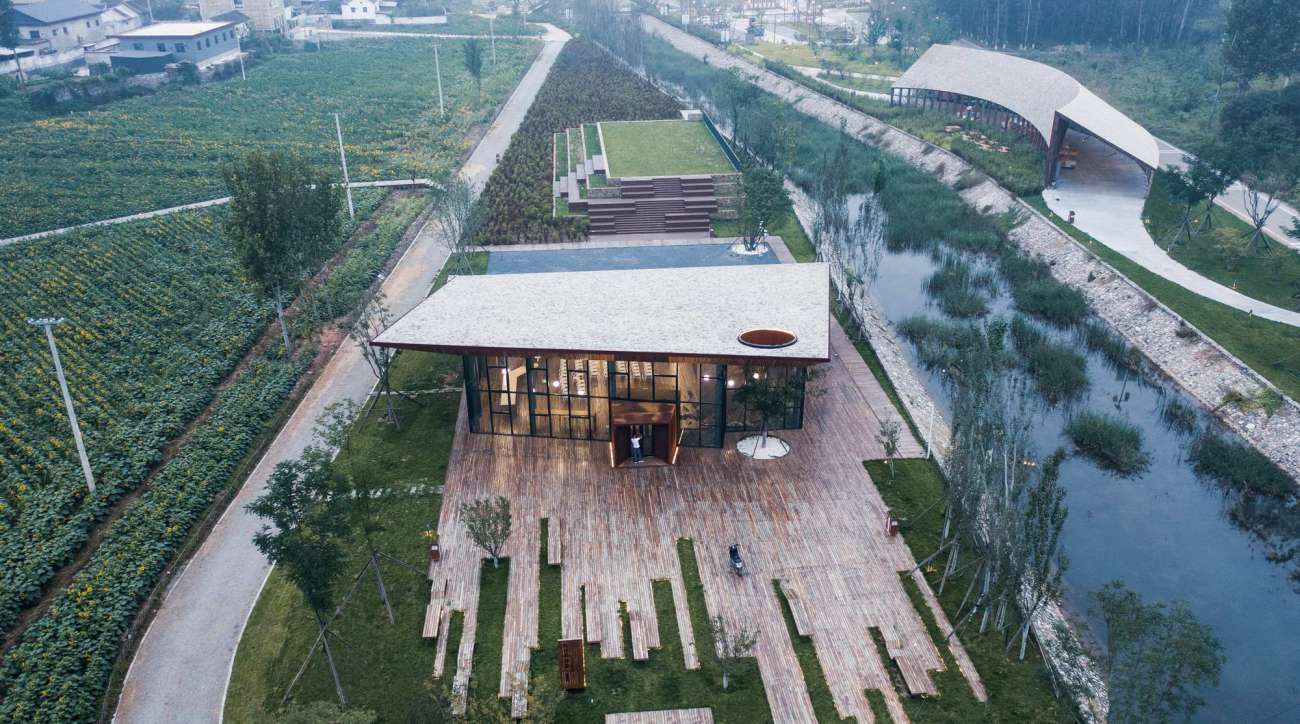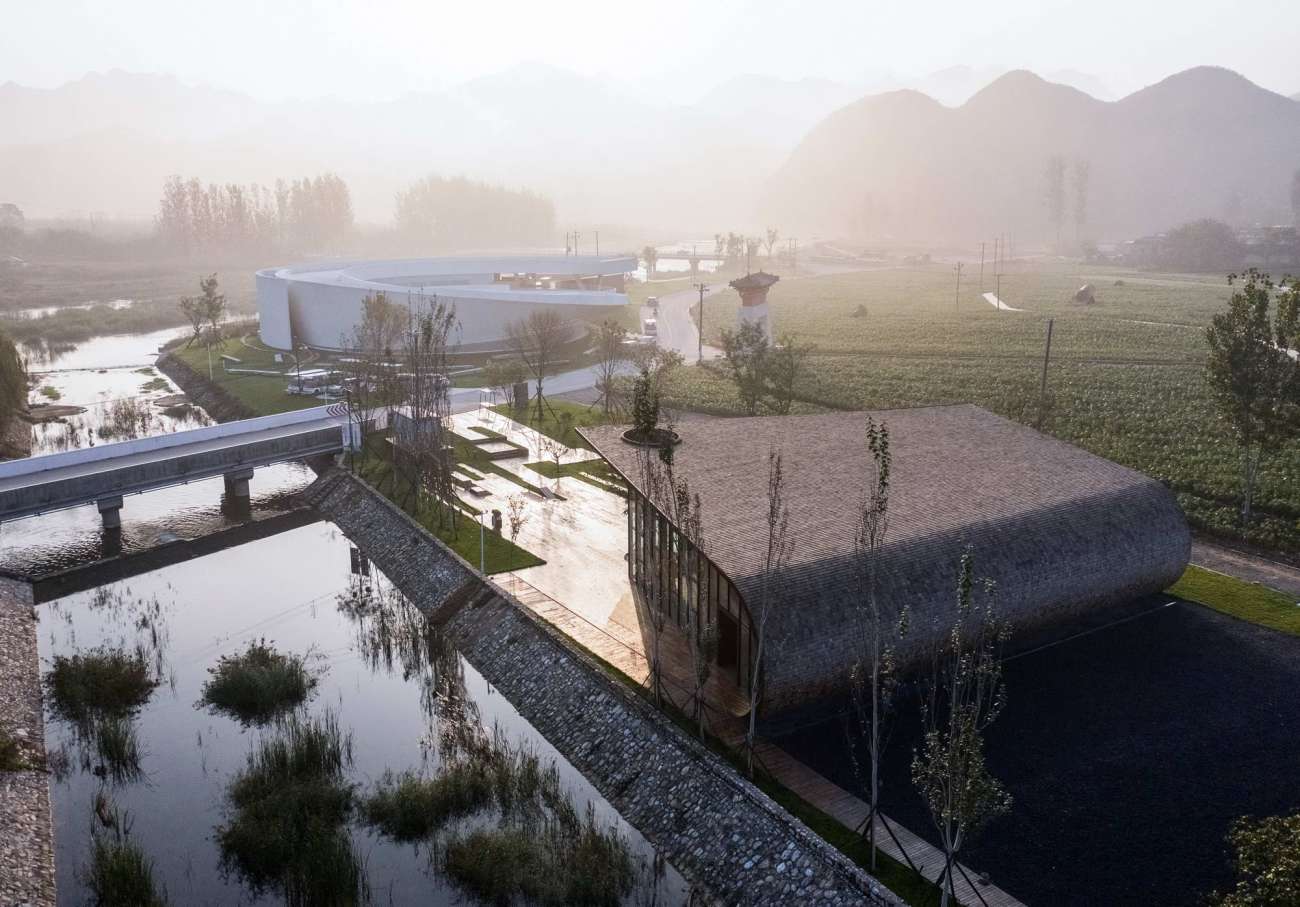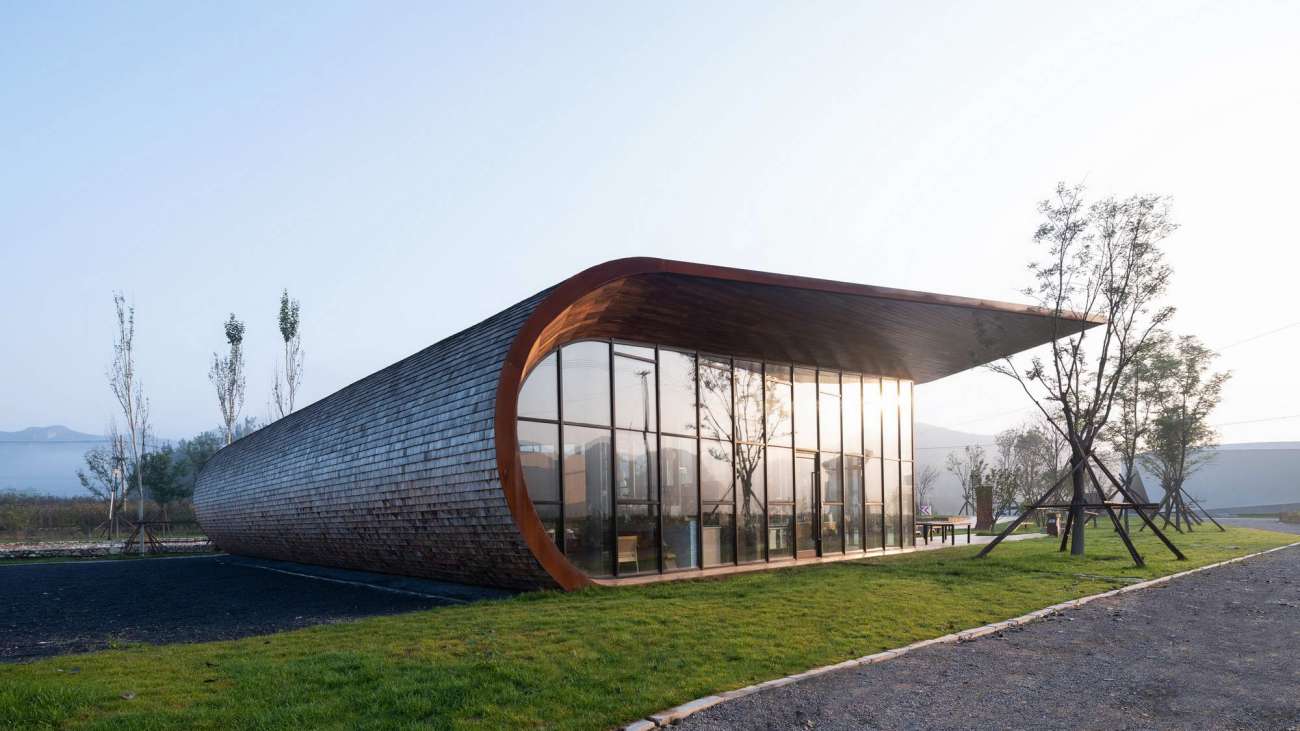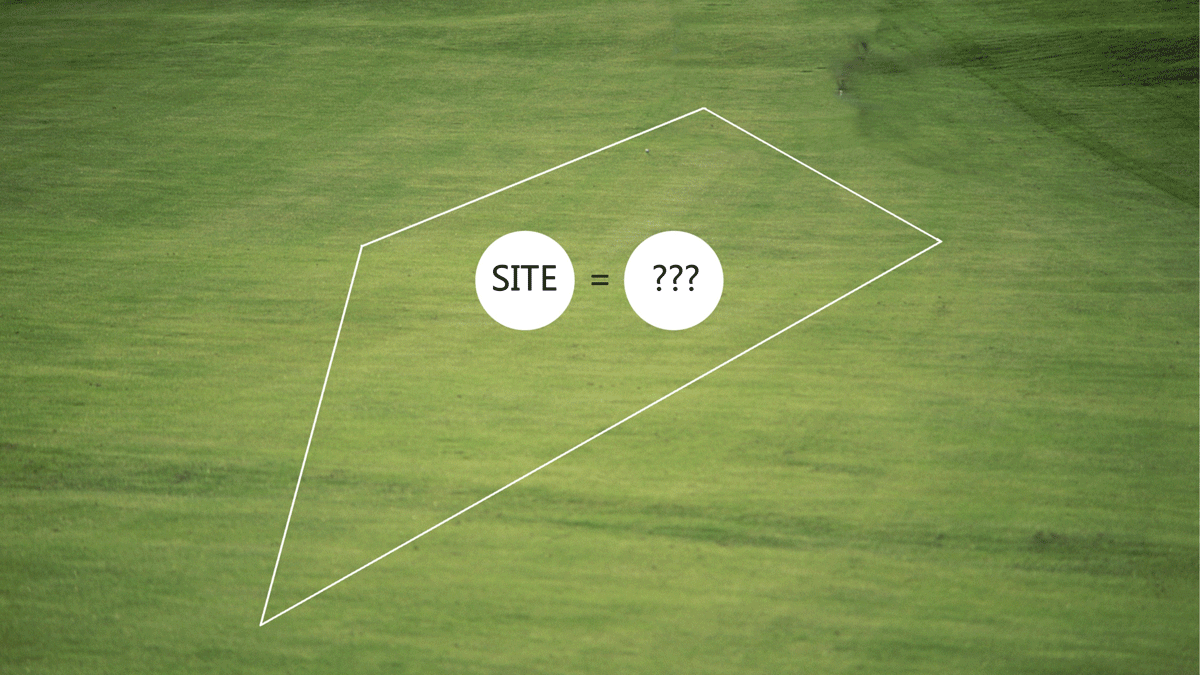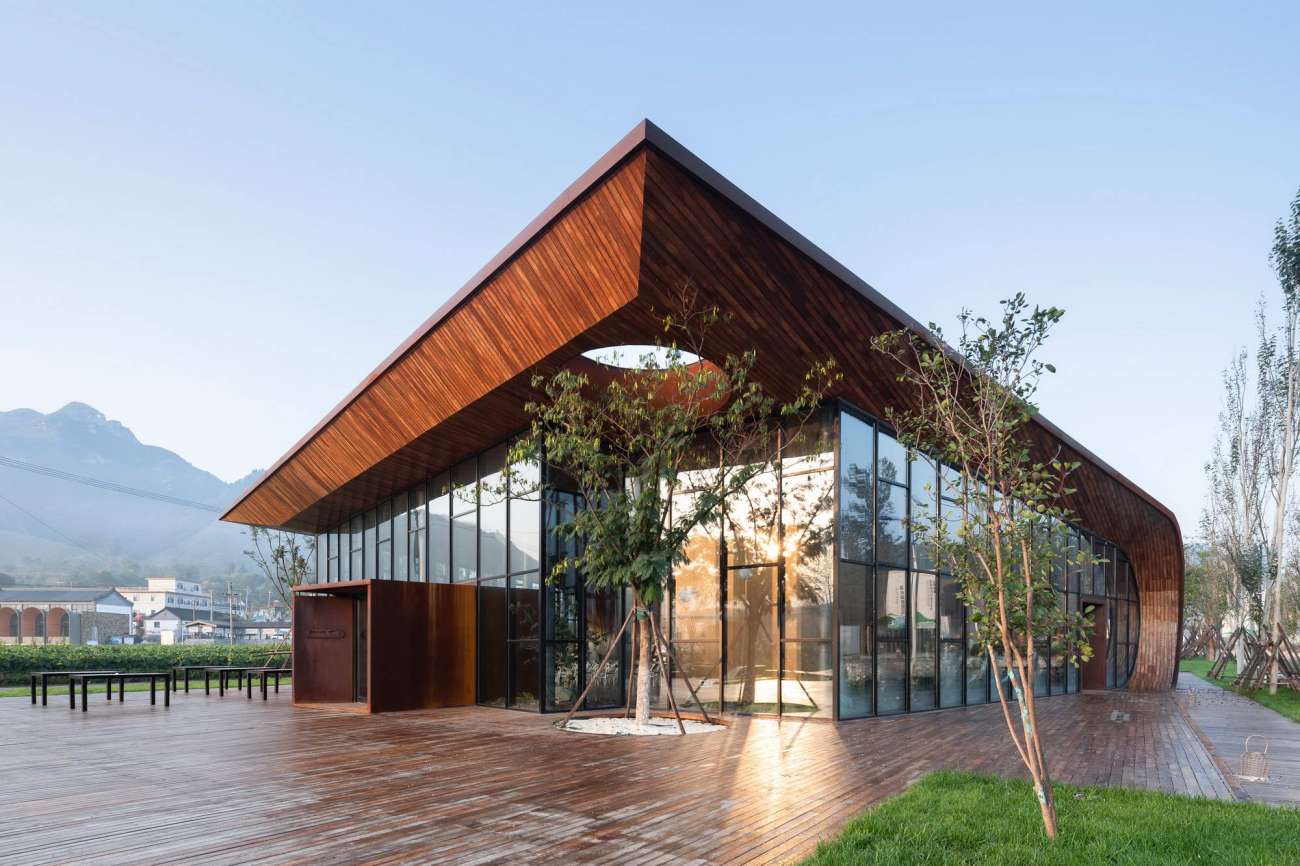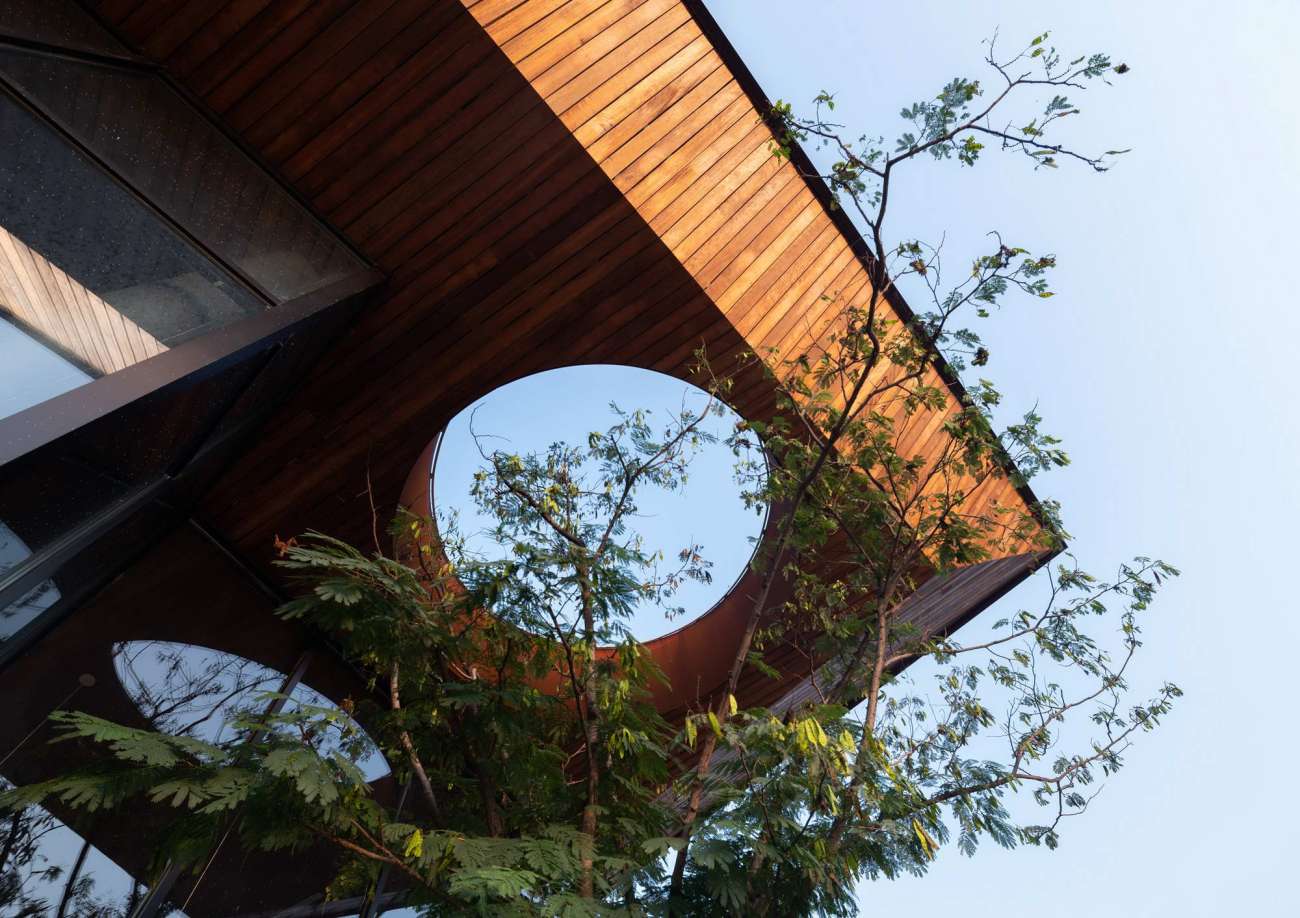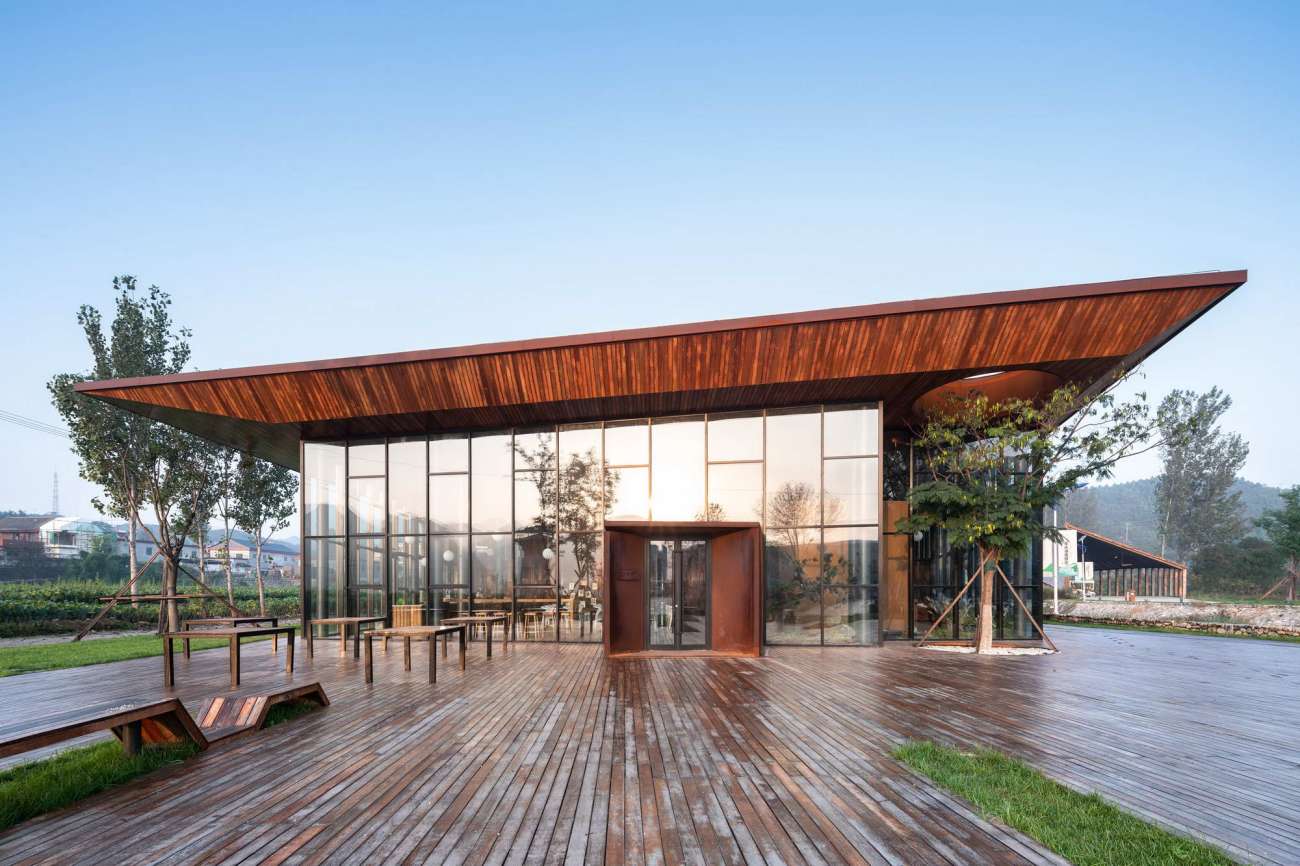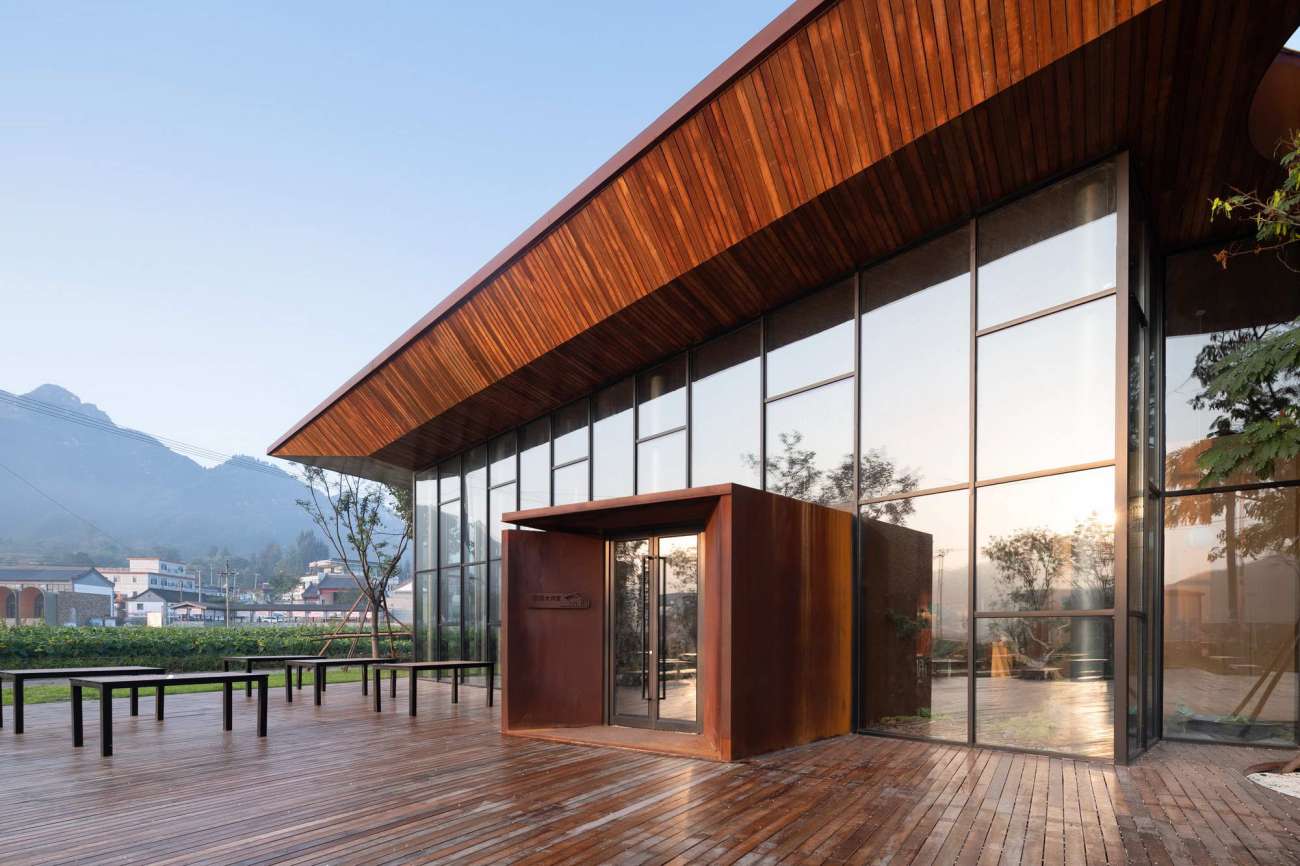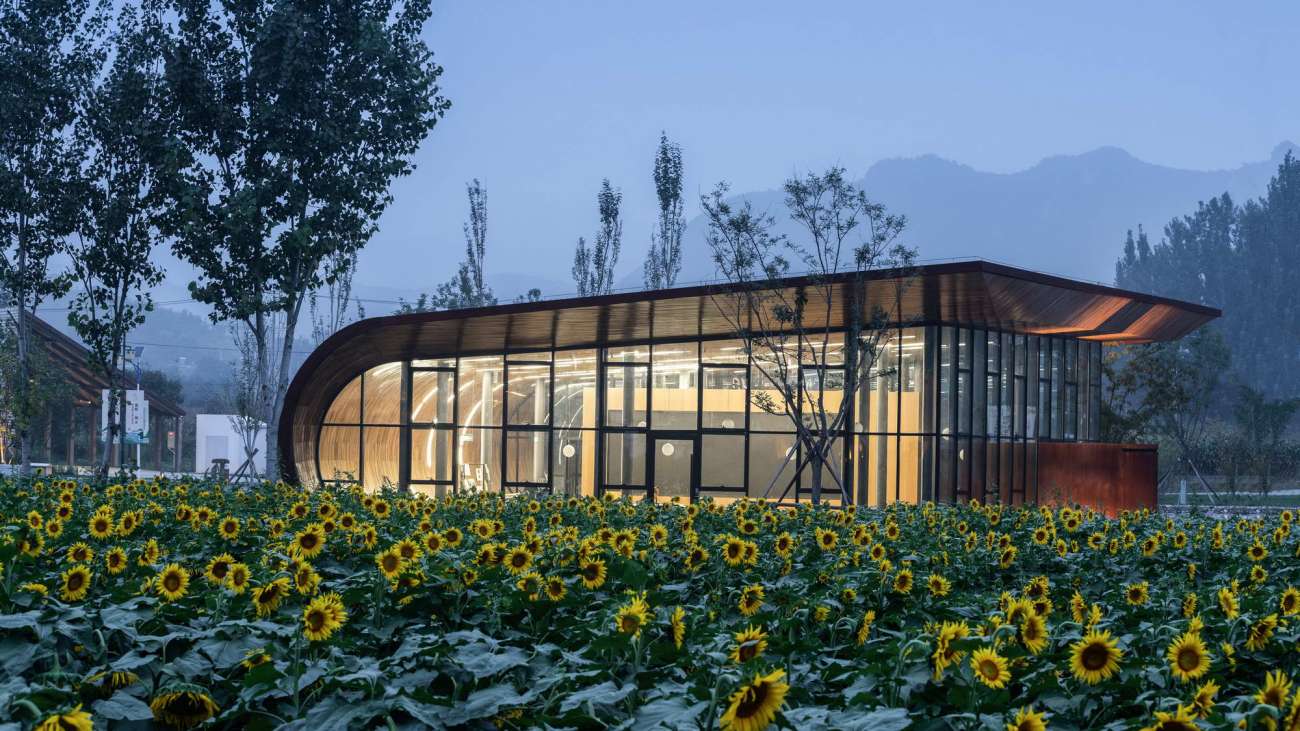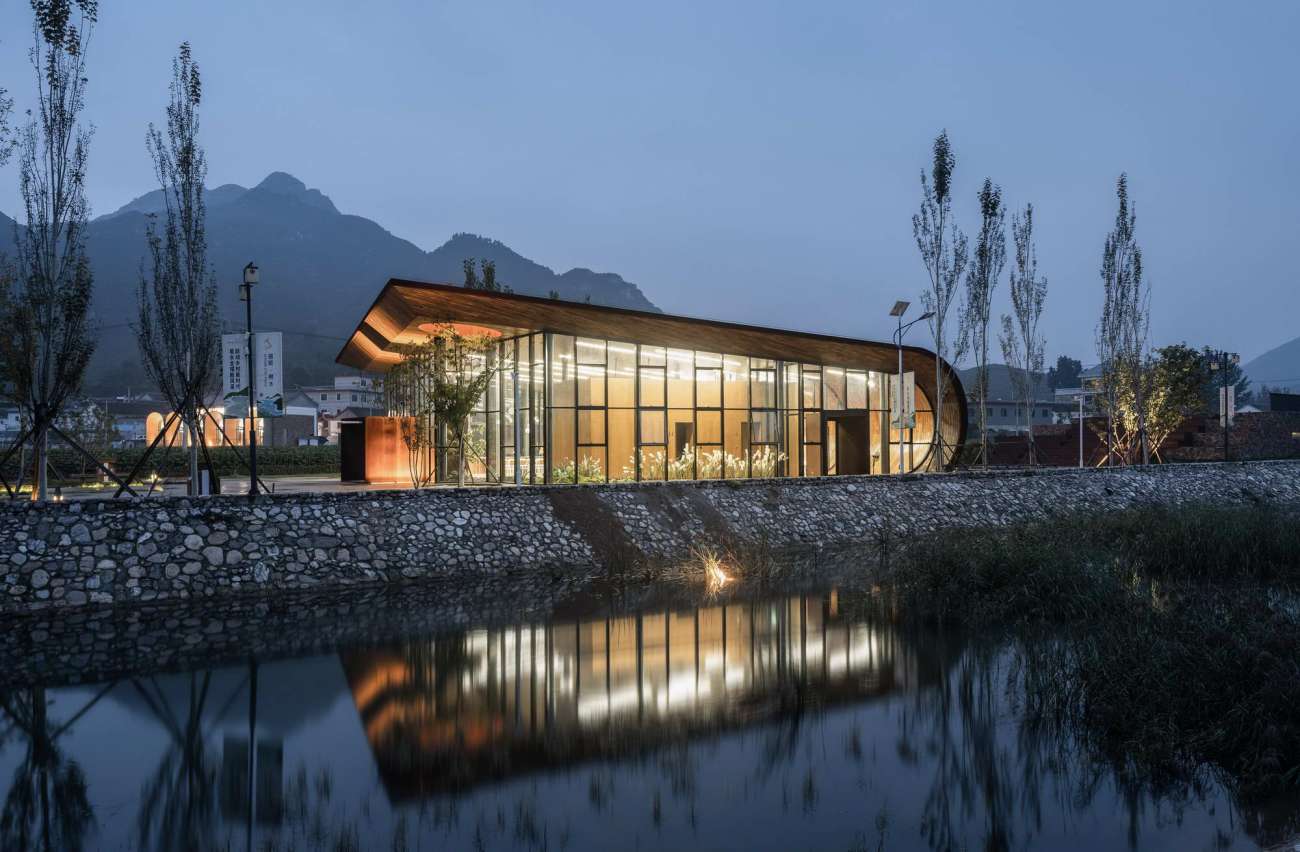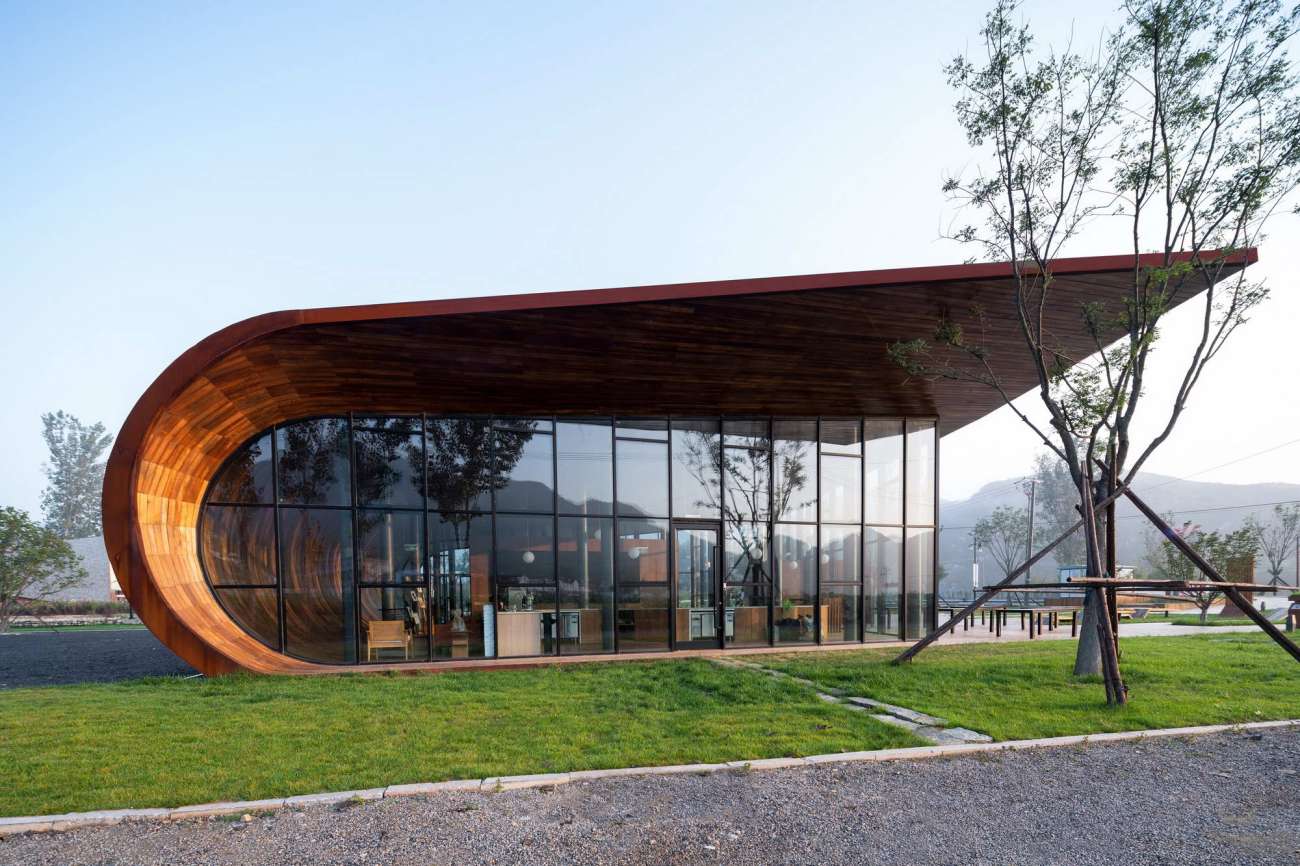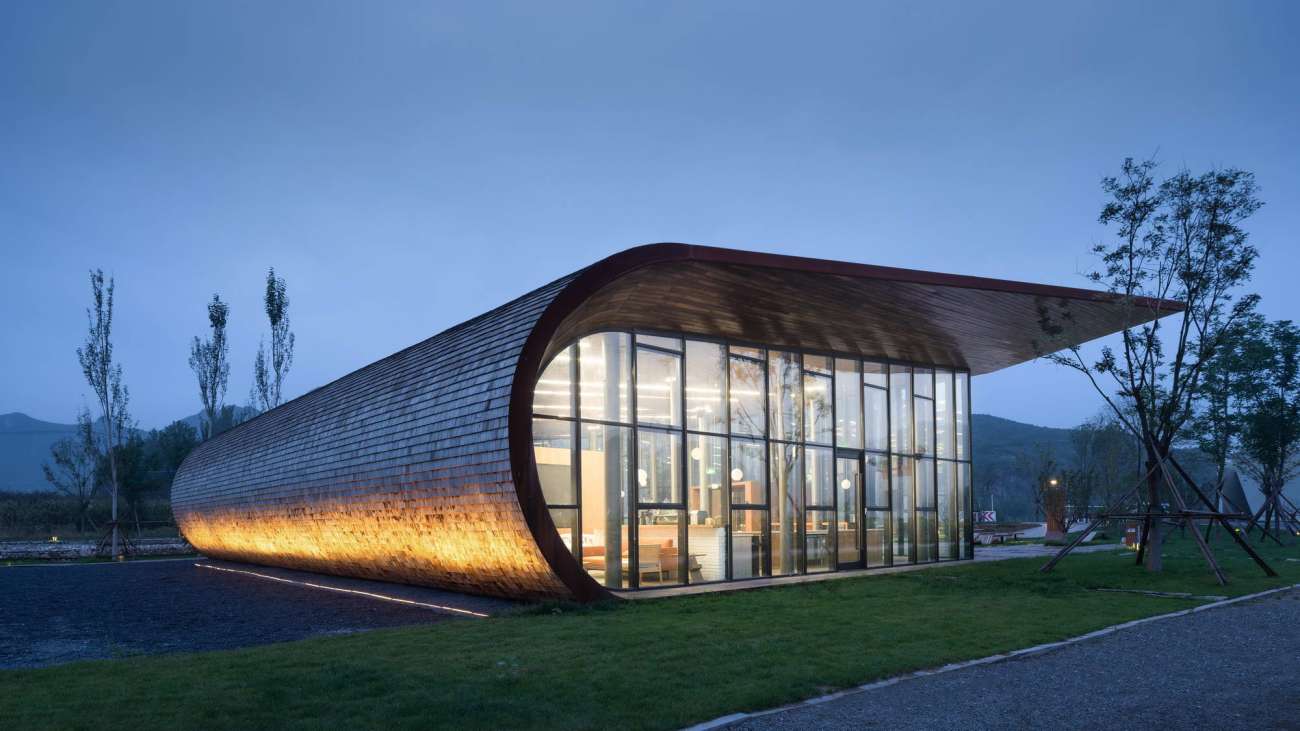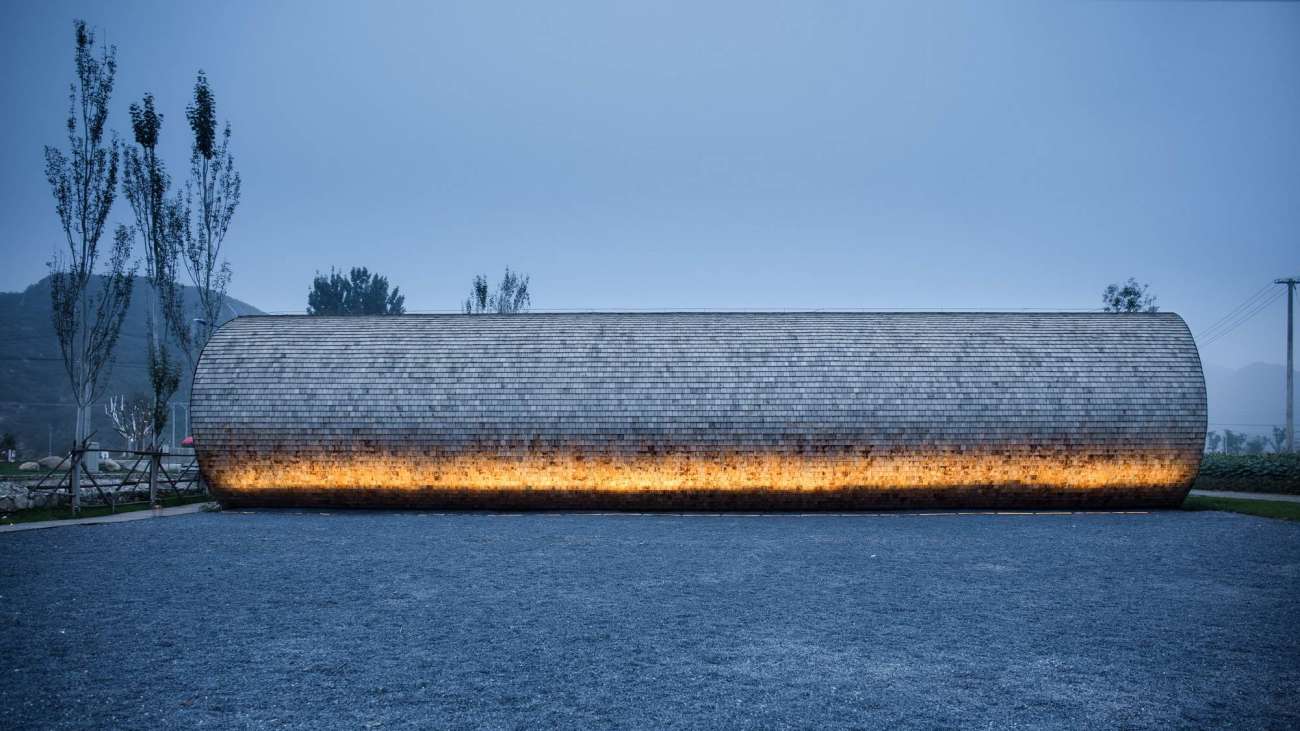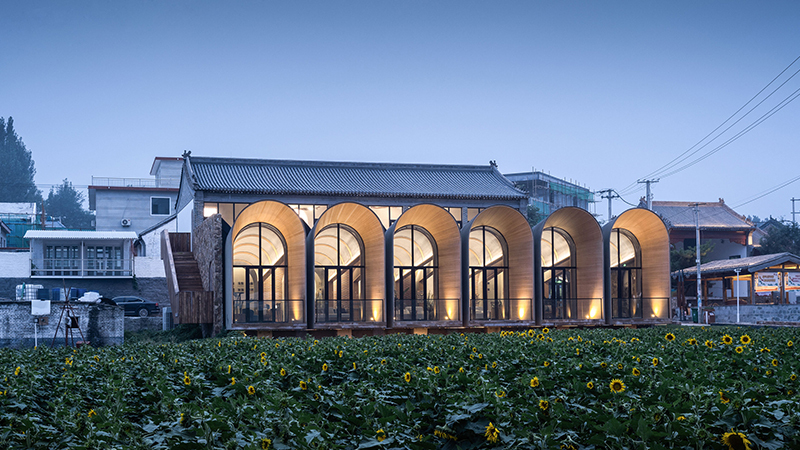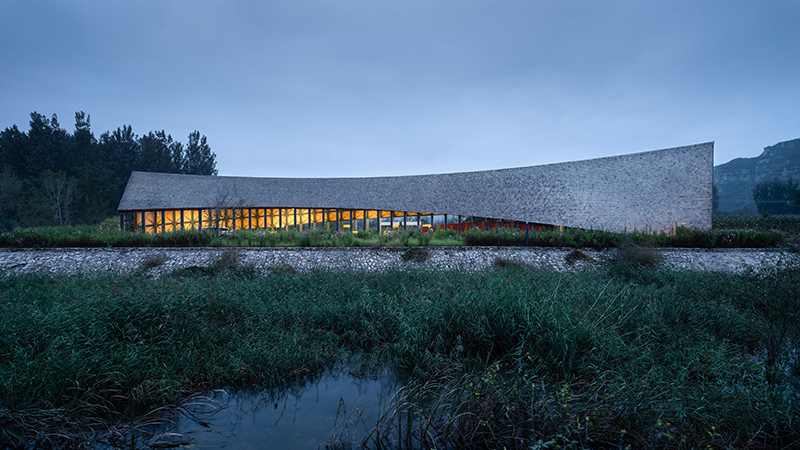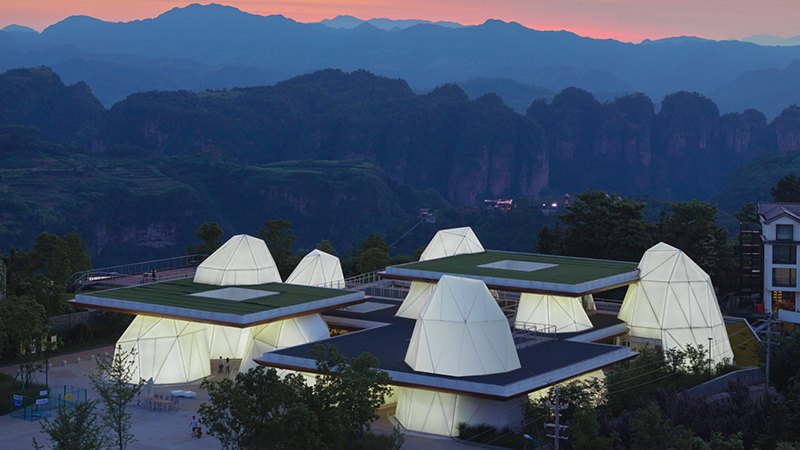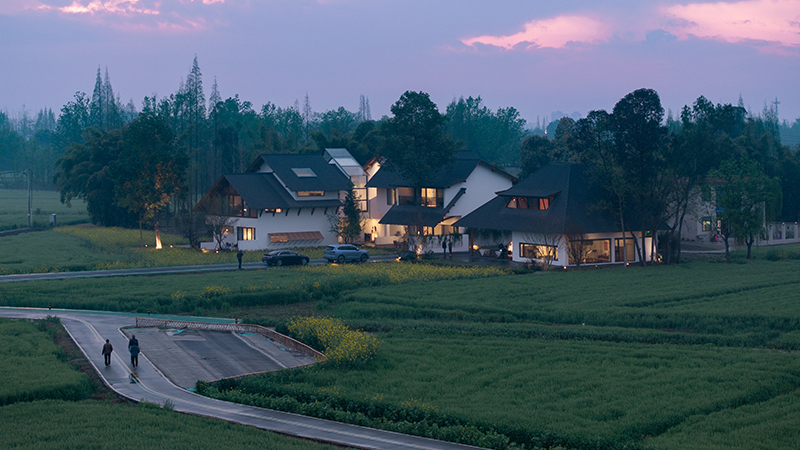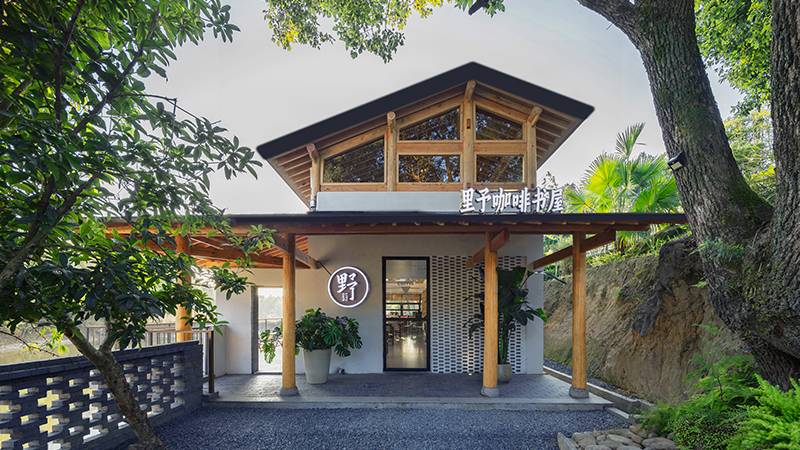路易斯·康曾言,「学校起源于一个人在一棵树下对几个人讲述他的领悟,老师不晓得他是老师,那些听他说话的人也不认为自己是学生。这些学生希望他们的儿女,也能听听像他这样的人讲话,于是空间开始兴建,第一所学校于焉而生。」在田岗知行村,一座归属于乡村的「田园大讲堂」正承载着「学校」最原始的含义——它是建造者的宣言,也是自省;它允许「教者」与「被教者」的角色对倒;它理应如「树下空间」般,是一个简单、开放的庇荫所,也能创造出自由和社区的感受。
Renowned architect Louis Kahn once said, "School originated when a man told several people his insights under a tree. The teacher did not know he was a teacher, and those who listened to him did not consider themselves students. These students hoped that their children would also be able listen to the speeches of people like him, so a space was built, and the first school was born." In Tiangang Zhixing Village, the Village Lecture Hall embodies the meaning of a "school" in its most basic form. It is in some ways a built manifesto of the architect, as well as a form of self-examination - it aims to allow the roles of "teacher" and "student" to be reversed, and is intended to be a simple, open space akin to “shade under a tree", thereby encouraging a sense of freedom and community.
01 做好「土壤」
Nourishing the “Soil”
△ 与田岗艺术中心对望的田园大讲堂
「做好土壤」,这是袈蓝一以贯之的法则,也是其营建田岗·知行村的总纲。「田园大讲堂」临河而建,位于居民生活区和村子的「门户」之间,建筑师将其设定为「讲堂」,希望能借此建立外界与村民的连接,并输出袈蓝在乡村振兴领域经过实践验证的价值观与方法论,让村民看到、感知到新设计与新产业能够带来的新未来,展望乡村自治的可能性。
The metaphor of "Nourishing the Soil” is a consistent principle of SYN Architects, and also serves as the general guideline for the regeneration of Tiangang and Zhixing Village. The Village Lecture Hall has been built along the river and is located between the residential area and "gateway" of the village. The architects programmed it as a lecture hall, hoping to establish a connection between the outside world and the villagers, and in order to communicate the values and knowledge of the village. Also, the proven values and methodology of SYN Architects in previous projects of rural regeneration can be passed on there, allowing villagers to learn about the transformations brought about by fresh designs and new industries, and encouraging them to look forward to a future of rural autonomy.
△ 如地毯般卷曲形成建筑
建筑师以建筑的造型作为隐喻的载体:在田园之上掀起一块草皮,如地毯般卷曲形成建筑,被掀起处暴露出绿植之下的土壤,揭示出「身处田园」的本质。「卷」暴露于外部的一侧以木瓦为主要材料,配合倾斜的屋面,避免风雨的侵蚀;屋顶内侧则覆以木材,并延续至卷曲墙面的内侧及地面,在材料的贴近性中将新形态关联至「旧记忆」,让建筑整体融入村落的自然、朴拙,如从「土壤」中自然生成。
The designer conceived the shape of the Lecture Hall through the metaphorical raising of a quadrangle-shaped piece of turf, and then curling it like a carpet to form the envelope of the building - the raised turf exposes the soil which lies beneath the grass, revealing the core essence of the countryside. The exposed side of the rolled “turf” is clad with wooden shingles, which turns into a sloped roof which necessarily protects the building from wind and rain. The underside of the roof is covered with longitudinal timber cladding and continues down the inner surface of the curved wall to the ground. The intimate, organic nature of the materials connects the striking form of the building to the memory of rural tradition, so that the building as a whole integrates into the atmosphere and simplicity of the village, through the process of its generation from the area’s "soil".
△ 建筑生成分析
景观的处理沿用了建筑的造型手法。建筑的背向,木地面贴着场地的边缘,围合出「田园大讲堂」的边界。在「掀起草皮」的过程中,建筑师有意留存了一个圆洞,将一颗树留存。而「被掀起」的屋顶的同样位置,亦有一处圆洞,与其投影面的圆相对,让另一棵树穿透建筑。两棵树的存在一方面将自然的气息融汇于建筑(两棵树、地面和屋顶的一对圆洞共同向访者提示着建筑屋顶是从地面掀起这一理念),另一方面则作为「学校」原型的化身物,暗示人们遥想「讲堂」空间起始时刻的美好。
The landscape design follows the modeling technique of the building. At the rear of the building, a wooden walkway extends along the edge of the site, defining the boundary of the Village Lecture Hall. As a remnant of the process of "lifting the turf", the architect has intentionally left a round hole and a tree, which corresponds to a circular hole in the same position on the projected surface of the "lifted" roof, allowing another tree to grow up and through it. The existence of the two trees, on the one hand, integrates the natural surroundings into the building (reminding the visitor that the roof of the building has been “lifted” from the ground), and on the other hand, is an embodiment of the "school" archetype, inviting people to contemplate the beginnings of the Lecture Hall.
△ 木与草的「拼图游戏」
「田园大讲堂」朝向路面的一侧,袈蓝建筑开启了木与草的「拼图游戏」。木地板与车行道的连通性时时被打断,或折叠为楼梯,或掀起而成座椅、路牌,又或者为树与景观小品留白……旺盛生长的草木蔓过木地板和背侧「被暴露的土壤」,似乎在召唤着田岗·知行村焕发新生。
Where the Village Lecture Hall faces the adjacent road, SYN Architects reveals a "jigsaw puzzle" of wood and grass. The connection between the wooden deck and the roadway is interrupted from time to time, folded into stairs, lifted up to form seats, street signs, or simply left blank for trees and landscaped elements to take root... The vigorous growth of new grass and trees in and around the wooden deck and the rear area of "exposed soil" seems to be summoning Tiangang Zhixing Village to regenerate itself.
02 悬浮的盒子
A Floating Box
在「掀起」的动作完成之后,整栋建筑一体成形。除弧墙之外,袈蓝建筑以大面积落地玻璃作为其余所有墙面的主材,又在北向和东向入口处以耐候钢门斗突出入口存在。
Once the "lifting" action has been completed, the whole building takes shape. In addition to the curved wall/roof, SYN Architects uses large panels of floor-to-ceiling glass for the other walls, with weathered steel vestibules at the north and east facades to highlight the entrances.
行至室内,袈蓝建筑贴着弧面做了一排条凳,让畸零空间重新具备功能价值。大面积的开放空间允许多样化的会议场景发生,两组吧台的设定则能在大型会议时分散人群,保证茶歇的稳定供应。事实上,整个「田园大讲堂」的建筑体成呈现为透明的玻璃盒子,建筑师在盒中造盒,将卫生间、监控室、设备间等必要配套功能组合于木质的「内盒子」中,又在高度上与建筑的总体高度「保持距离」。如此,一方面能够避免卫生间隔间等小面积空间层高过高带来的不适,也让内盒子与外盒子形成一种悬浮感,轻盈地落于「土壤」之上。
Moving indoors, SYN Architects have integrated a row of custom benches at the curved surface, so that the potentially awkward space regains functional value. Meanwhile, the large open space allows for a wide variety of gatherings, and the placement of two sets of bar counters allows for easy access during large-scale meetings, ensuring the convenience of any future tea breaks. In its entirety, the Village Lecture Hall essentially presents itself as a transparent glass box.Additionally, the architect has further provided a smaller box within the box, which combines the necessary supporting functions such as restrooms, a monitoring room, and equipment room into the "inner box", clad in timber panels. In terms of height, it stops short of the overall height of the larger building envelope. In doing so, it avoids the potentially awkward height of a tall ceiling in small spaces such as toilet cubicles, while lending the inner box the appearance of “floating” within the outer box, lightly placed above the "soil".
在结构柱与屋顶的交接处,袈蓝建筑巧妙围绕柱身于顶部开设凹槽,并将灯带埋入。当灯光开启,柱头与屋顶间泛起光晕,似乎彼此脱离,这种视觉效果于细节处强调了建筑整体的「悬浮感」,让游览「田园大讲堂」之旅惊喜迭出。室内的主体照明采用条状的灯带,它埋入屋顶与弧墙内侧,于室内呼应户外景观的「拼图游戏」。
At the junction of the structural columns and the roof, SYN Architects cleverly opens grooves in the ceiling around the tops of the columns, embedded with strips of recessed light panels. When the lights are on, a halo appears between the tops of the columns and the roof, which seem to be separated from one another. This visual effect emphasizes the overall "suspension" of the building in its details, and adds a surprising element for visitors to the Village Lecture Hall. The main indoor lighting also adopts recessed light strips, which are embedded in the ceiling and the inner side of the curved wall, echoing the "jigsaw puzzle" pattern of the outdoor landscape.
03 让「乡村振兴」发声
Revitalization of Tiangang Zhixing Village
在城市化的飞速进程之中,人们总是长于依赖「法」而迷失「道」。如今,越来越走向建筑学的乡村则提供了一片淳朴、自然、自足,无需过多规训的纯粹之境。「田园大讲堂」以「揭示本质」作为创作的源起,用弧面和玻璃让「墙」这一隐喻牵制的建筑学元件被柔化甚至消失,让身处其间的人们沉浸于自然的暗示下,自主、自发地开始行动——像是最初聚集于树下而「学校」兴起,袈蓝建筑期待「田园大讲堂」及其中所举办的活动能埋下田岗·知行村「乡村振兴」的火种,星火燎原。
In the rapid process of urbanization, people have tended to rely on theoretical methods of development, often losing sight of the inherent rural values present in sites they build on. Today, the countryside, which is increasingly moving towards architectural development, provides a largely pure environment that is simple, natural, self-sufficient and does not require an influx of new conditions placed on it. The Village Lecture Hall takes the concept of "revealing the essence" as the starting point of its conception, and uses curved surfaces and glass to downplay the architectural element contained by the metaphor of "wall", rendering it almost invisible so that people experiencing it are simply immersed in its references to nature. In this way, we can start to act autonomously and spontaneously - like gathering under the tree before the first school came into being, SYN Architects expect that the Village Lecture Hall and the activities held within will spark a lively, joyous revitalization of Tiangang Zhixing Village.
项目信息
Project Information
项目名称:田园大讲堂
Project name: The Lecture Hall of Tiangang Zhixing Village
项目地点:河北省保定市易县田岗村
Project location: Tiangang village, Yi county, Baoding city, Hebei province
项目类型:建筑设计,室内设计
Project type: Architecture design, interior design
项目状态:已建成
Project status: Built
业主:圆歌集团
Client: IVYONE GROUP
设计团队
Design team
主持建筑师:邹迎晞
Chief architect: Zou Yingxi
建筑设计团队:蒋志华、韩阳、田亚红、南文静
Architecture design team: Jiang Zhihua, Han Yang, Tian Yahong, Nan Wenjing
室内设计团队:夏福强、何敏、曹真真、钱国兴、刘婷婷、李倩茜、 冯炎、郭萌佳、李辉
Interior design team: Xia Fuqiang, He Min, Cao Zhenzhen, Qian Guoxing, Liu Tingting, Li Qianqian,
软装设计团队:束坤、谷悦诚
Decoration design team: Shu Kun, Gu Yuecheng
景观设计团队:李贝贝,张俊超,刘爽,梁景琪,石青青
Landscape design team:Li Beibei, Zhang Junchao, Liu Shuang, Liang Jingqi, Shi Qingqing
设计周期:2020年2月-5月
Design period: Feb-May, 2020
施工周期:2020年5月10月
Construction period: May-Oct, 2020
场地面积:800平方米
Site area: 800 square meters
建筑面积:406.2平方米
Interior area: 406.2 square meters
施工单位:中外建华诚工程技术集团有限公司-陈支努团队
Construction company:HCCI Urban Architectural Planning and Design Co., Ltd.-Team Chen Zhinu
结构工程师:北京中和建城建筑工程设计有限公司-卢理杰团队
Structure engineer: Beijing Zhonghe Jiancheng Architectural Engineering Design Co., Ltd.-Team Lu Lijie
摄影师:直译建筑摄影
Photographer: ArchiTranslator
更新日期:2022-06-14 15:22:40
非常感谢 袈蓝建筑 带来的精彩项目, 查阅更多Appreciations towards SYN Architects for sharing wonderful work on hhlloo. Click to see more works!
